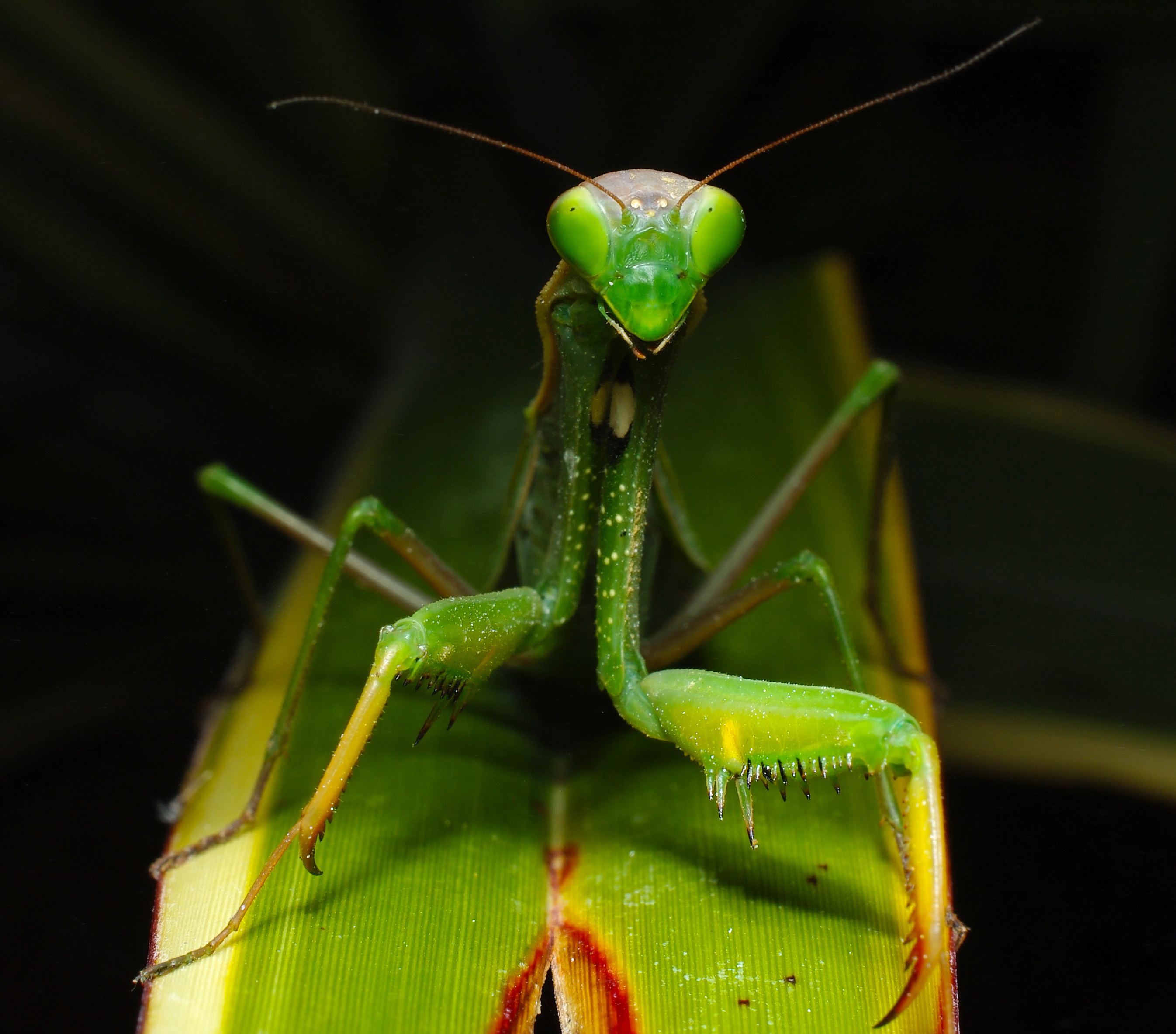Praying mantis, also called mantid, is a hunting insect known for holding its forelegs in a prayerlike position. There are more than 2,000 species (kinds) of praying mantis. They live throughout the world, though most species live in the tropics. The praying mantis has a small, triangular head with large, widely separated eyes. The large forelegs are covered with spines. Mantises range from 1/2 to 6 1/2 inches (1 to 17 centimeters) long.

Most mantises are ambush hunters. The praying position is actually an attack stance. It enables the mantis to swiftly strike and grasp prey using its forelegs. Mantises feed mostly on insects and spiders, though large ones may take such prey as small frogs or hummingbirds.
Mantises typically resemble in color, and sometimes in form, the plants on which they live. This camouflage may help a mantis to surprise its prey.
Loading the player...Praying mantis eating a caterpillar
In some species, a female praying mantis sometimes devours her mate, but the male may continue mating even after his head and brain have been eaten. Females lay their eggs inside a protective covering called an egg case. They can lay several egg cases, each one of which may contain from 10 to 400 eggs. The egg cases are ribbed and light brown to white in color. They can sometimes be seen on trees and shrubs in winter, when leaves no longer hide them.
